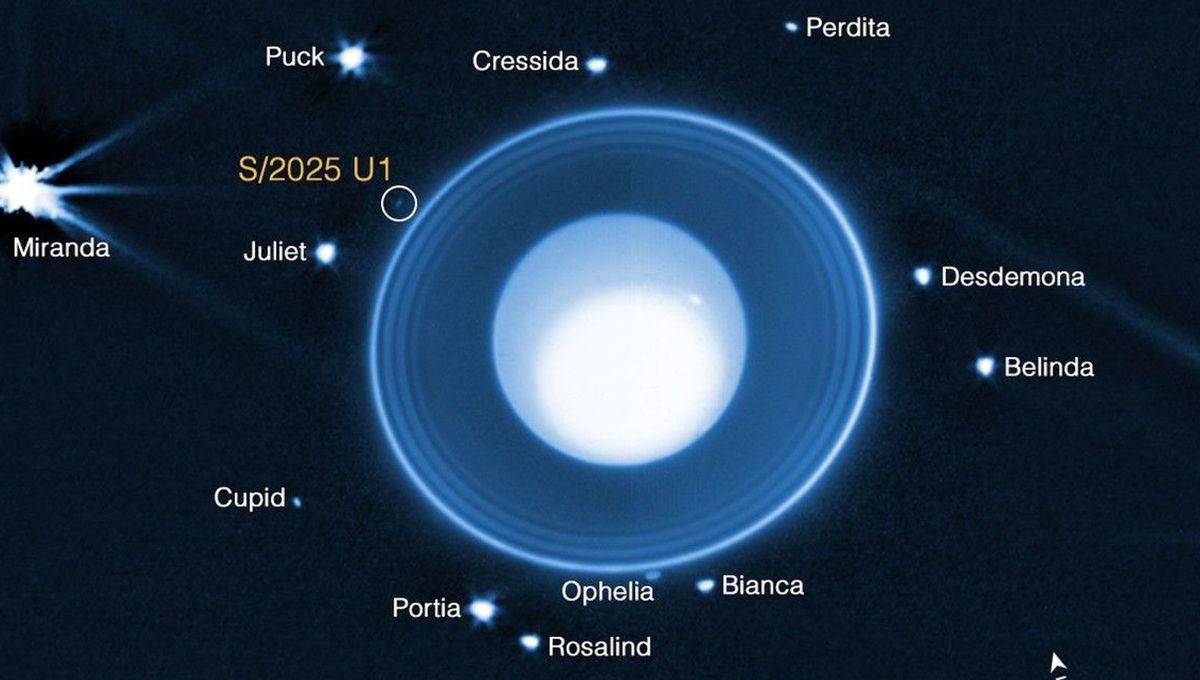
JWST has spotted the 29th moon of Uranus, finding an object that’s probably the size of a small city 2.7 billion kilometers away.
Within six years of discovering Uranus, William Herschel had found two moons. Although Herschel thought he had found four more, it took 64 years before the next two real discoveries. In the 135 further years before Voyager 2 visited the system, only one more moon was found, but in the last 40 years, the pace has picked up dramatically.
Voyager itself spotted 10 moons, bringing the total to 15. Far from being the end of things, however, these discoveries alerted astronomers to the likelihood that there were many more satellites in the system. These were either too small for Voyager to detect, despite its closeness, or had been inconveniently out of view of the probe’s camera during the time it was nearby and focused on the planet and its five known moons.
A burst of discoveries by Earth-based telescopes and Hubble took the total to 27, but that seemed to be it, with 21 years passing before the announcement last year of a 28th. Now we have one more, with NASA’s Dr Maryame El Moutamid announcing the finding based on observations the JWST made in February.
“It’s a small moon but a significant discovery, which is something that even NASA’s Voyager 2 spacecraft didn’t see during its flyby nearly 40 years ago,” El Moutamid said in a statement. The discovery is yet to pass peer review, but the movements of a dot across 10 40-minute exposures are at less risk of misinformation than the basis of most scientific claims.
Uranus’s five moons, large enough to be nearly spherical, form a middle band, separating the inner system and those further out, some of which are probably captured comets or asteroids. The new discovery is the 14th orbiting inside Miranda, the innermost large moon.
“No other planet has as many small inner moons as Uranus, and their complex inter-relationships with the rings hint at a chaotic history that blurs the boundary between a ring system and a system of moons,” said Dr Matthew Tiscareno of the SETI Institute. “Moreover, the new moon is smaller and much fainter than the smallest of the previously known inner moons, making it likely that even more complexity remains to be discovered.”
“It’s located about 35,000 miles (56,000 kilometers) from Uranus’ center, orbiting the planet’s equatorial plane between the orbits of Ophelia (which is just outside of Uranus’ main ring system) and Bianca,” said El Moutamid. That makes it the third closest moon to Uranus. “Its nearly circular orbit suggests it may have formed near its current location.”
The moons of Jupiter and asteroids vary greatly in color, so their brightness can be an unreliable guide to size. However, at this distance from the Sun, where objects are usually covered in ice, there is more consistency in how much light they reflect, leading the team to estimate their find at 10 kilometers (6 miles) in diameter.
The first 27 moons of Uranus have all been named after characters from Shakespeare’s plays or an Alexander Pope poem. This one and last year’s announcement will no doubt get similar designations – fortunately, Shakespeare offers plenty of choices. Then again, with the new discovery lying so close to the rings, even its tiny gravity may be affecting them, so maybe it’s time to switch to Tolkien.
“Looking forward, the discovery of this moon underscores how modern astronomy continues to build upon the legacy of missions like Voyager 2, which flew past Uranus on Jan. 24, 1986, and gave humanity its first close-up look at this mysterious world. Now, nearly four decades later, the James Webb Space Telescope is pushing that frontier even farther,” El Moutamid said.
Source Link: JWST Spots Tiny New Moon Just Outside Uranus's Rings, Bringing Total to 29